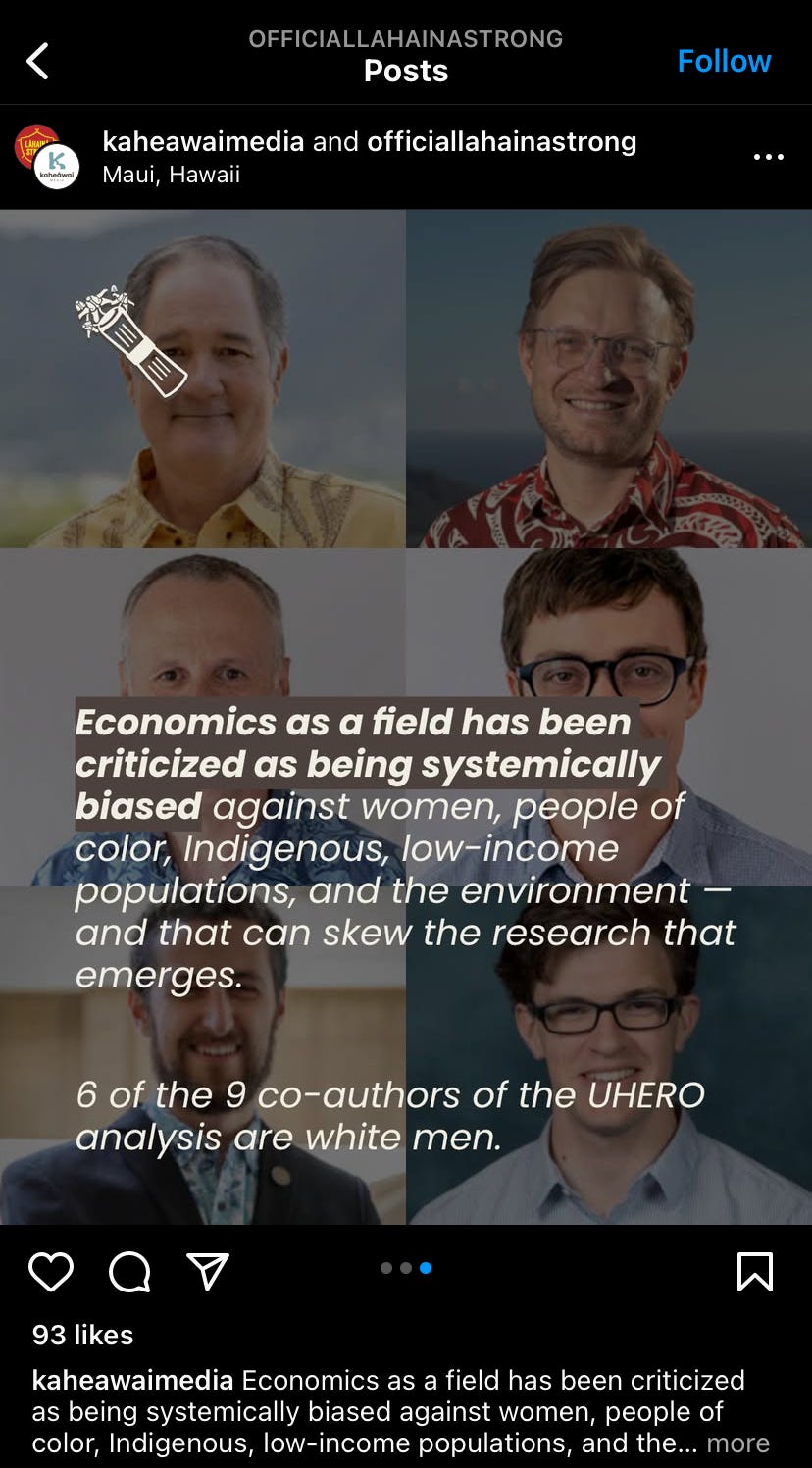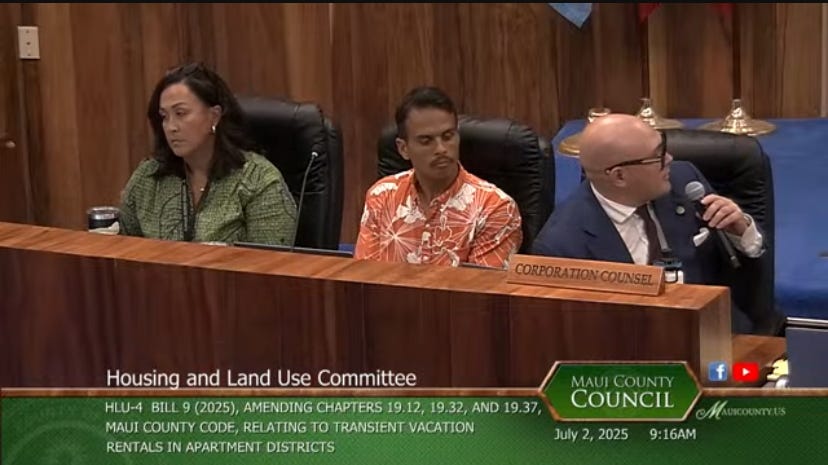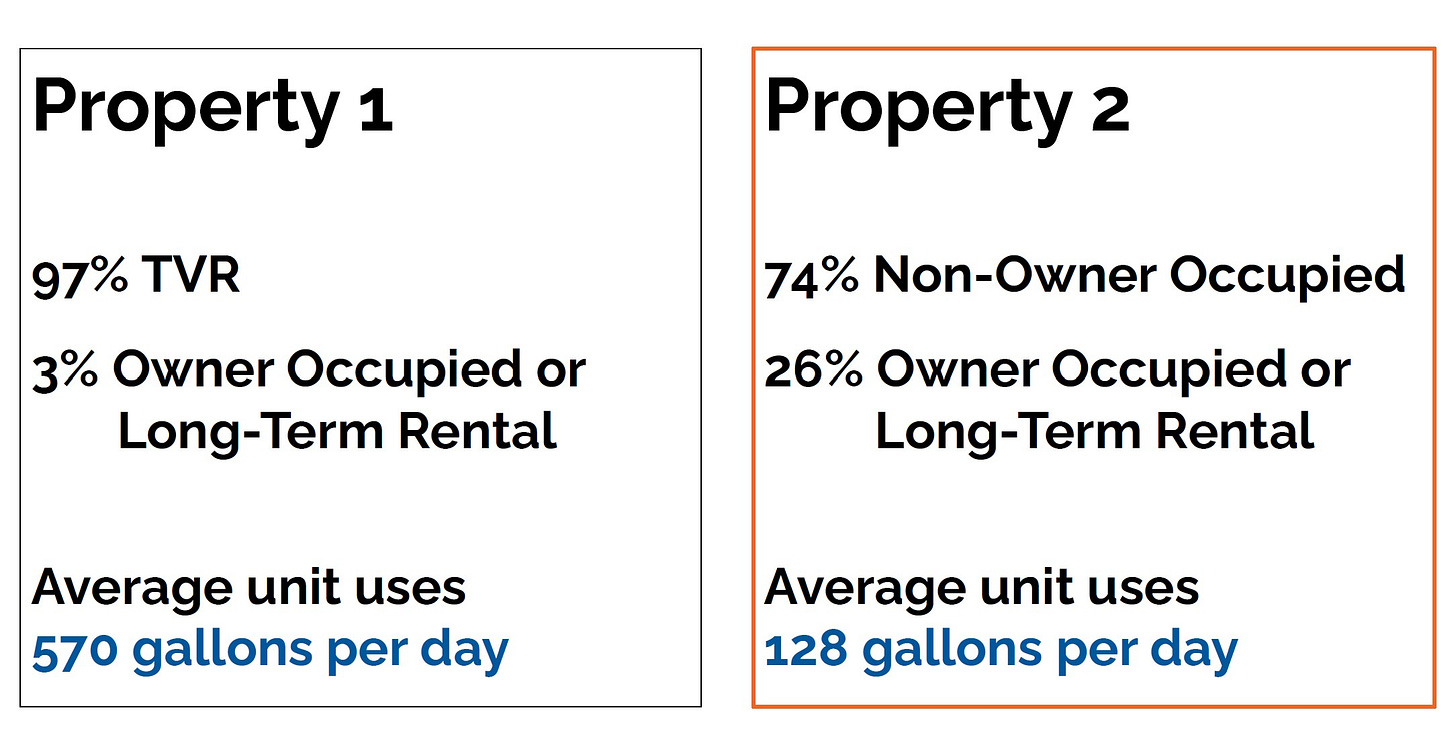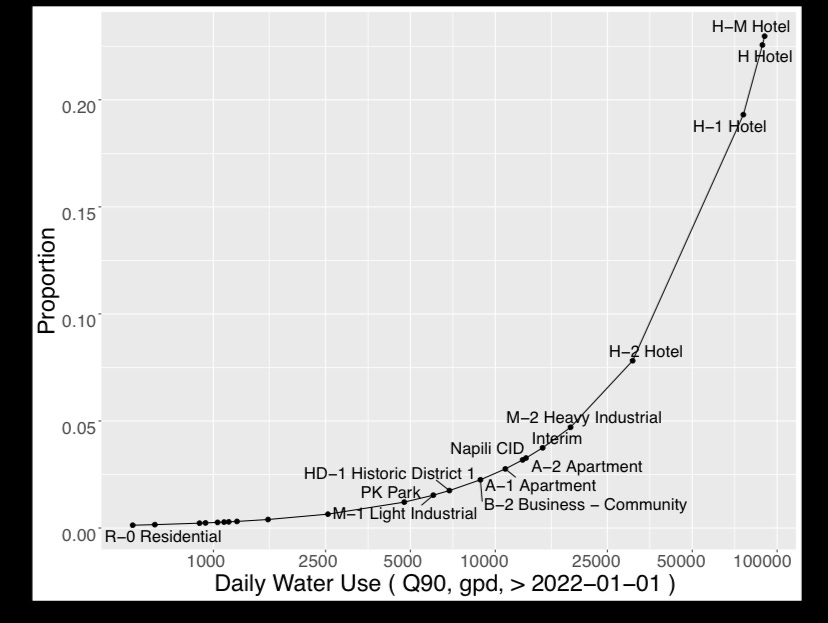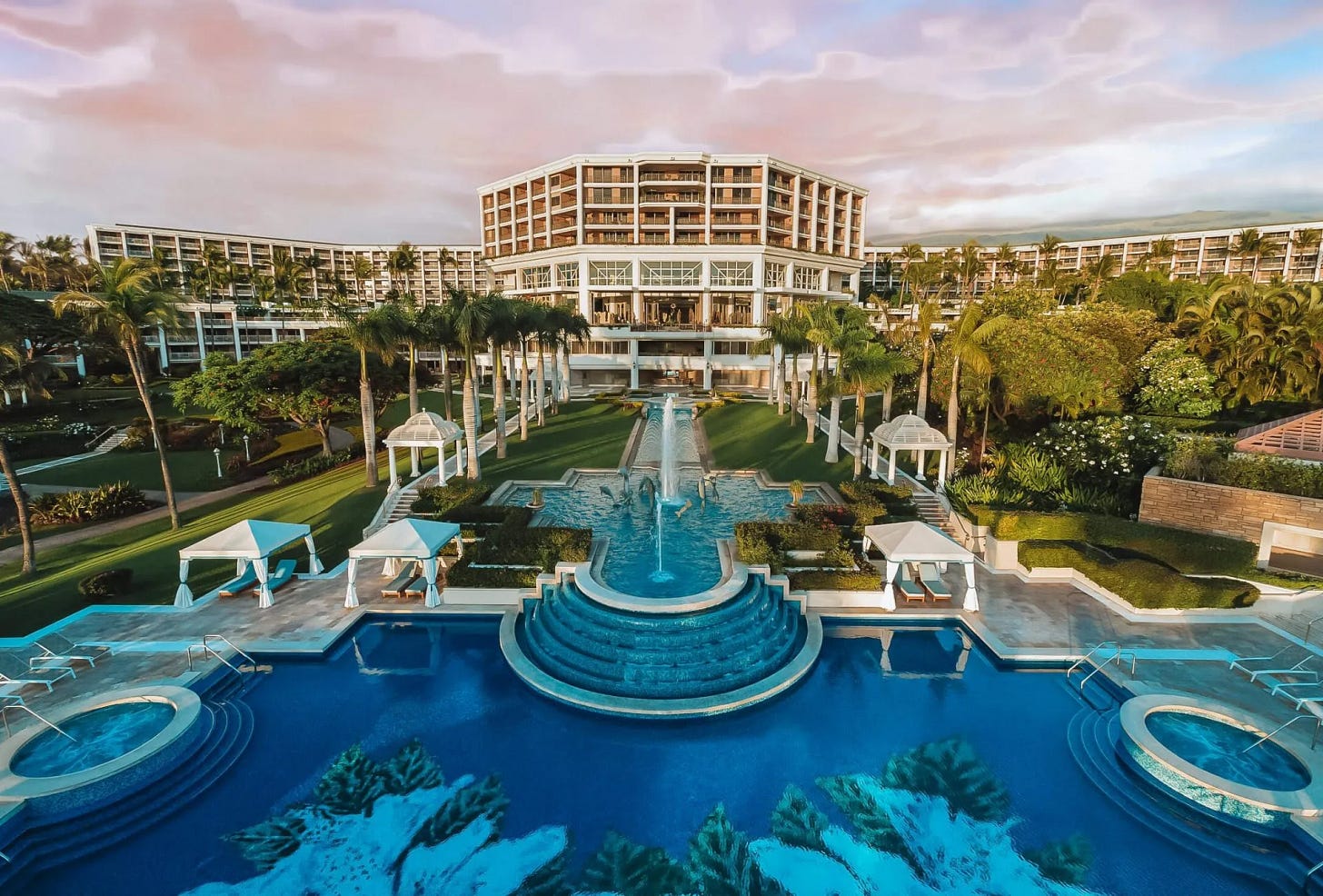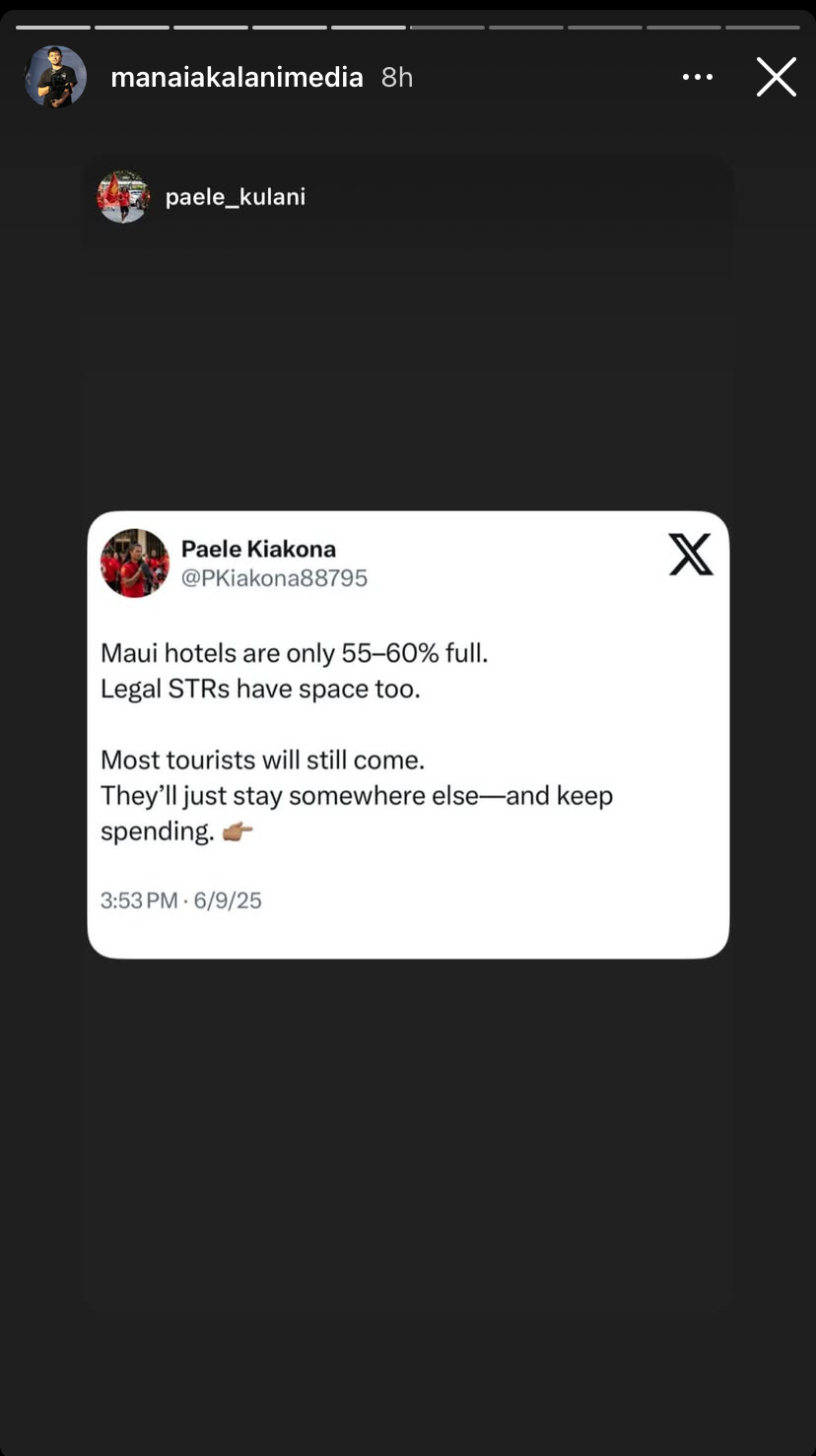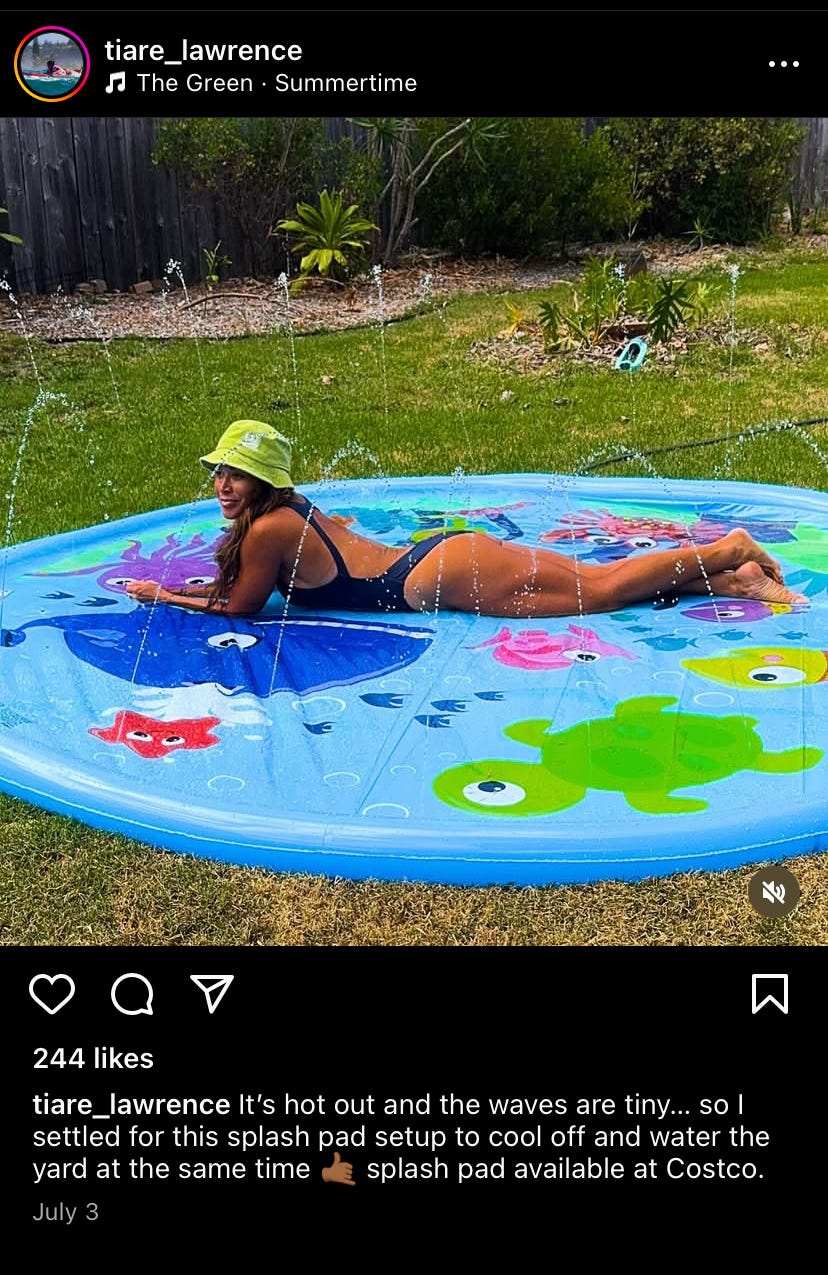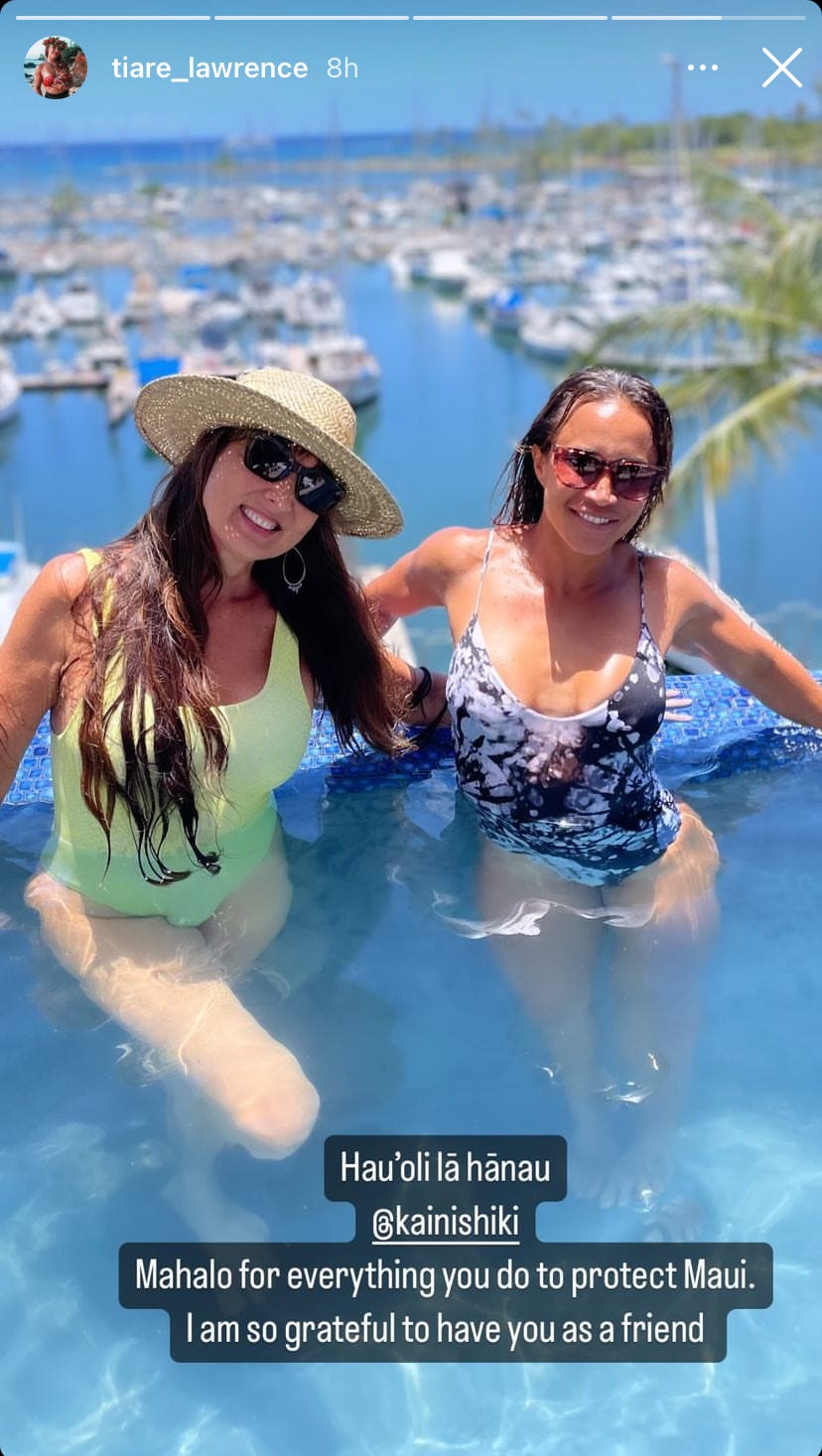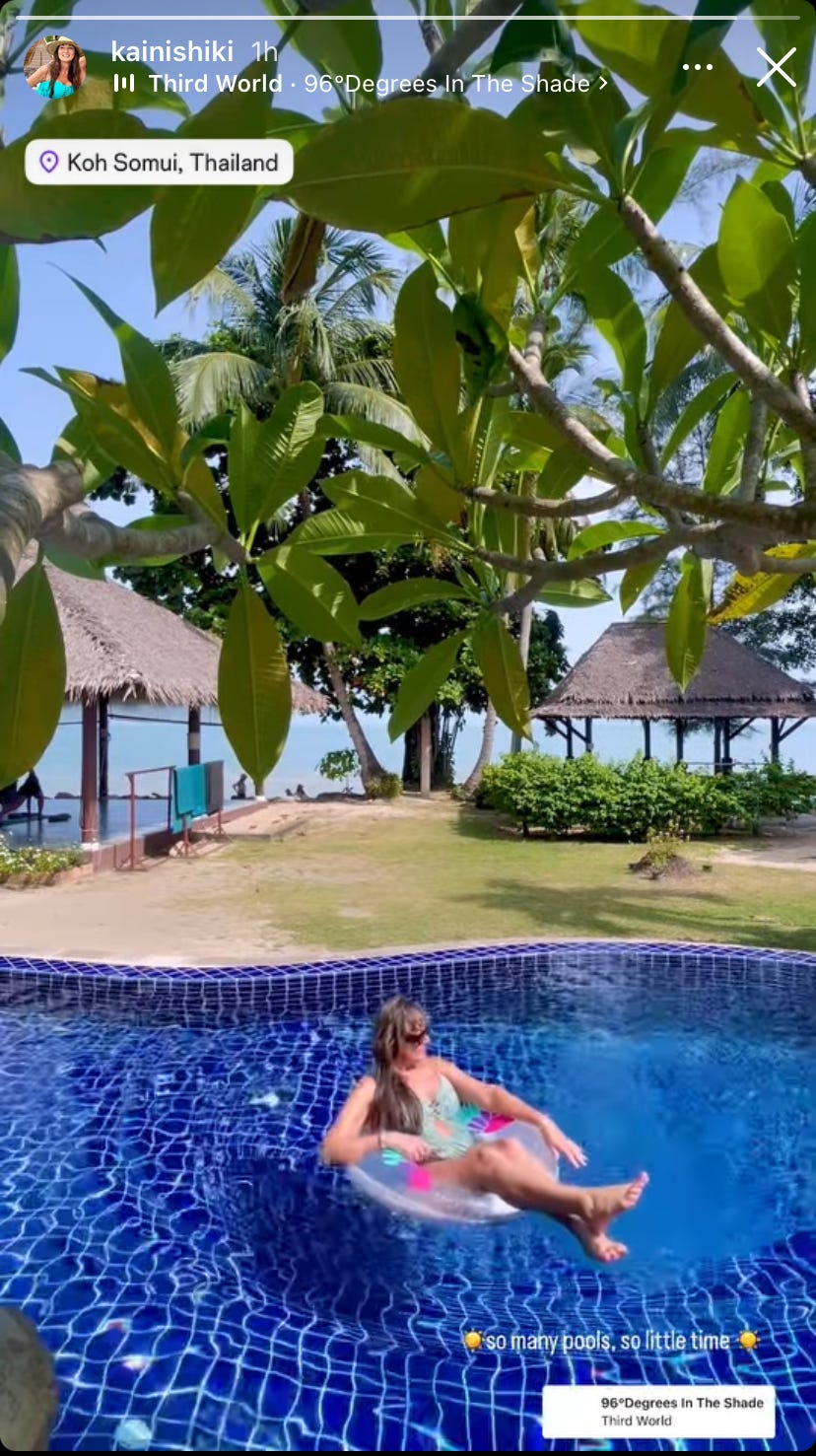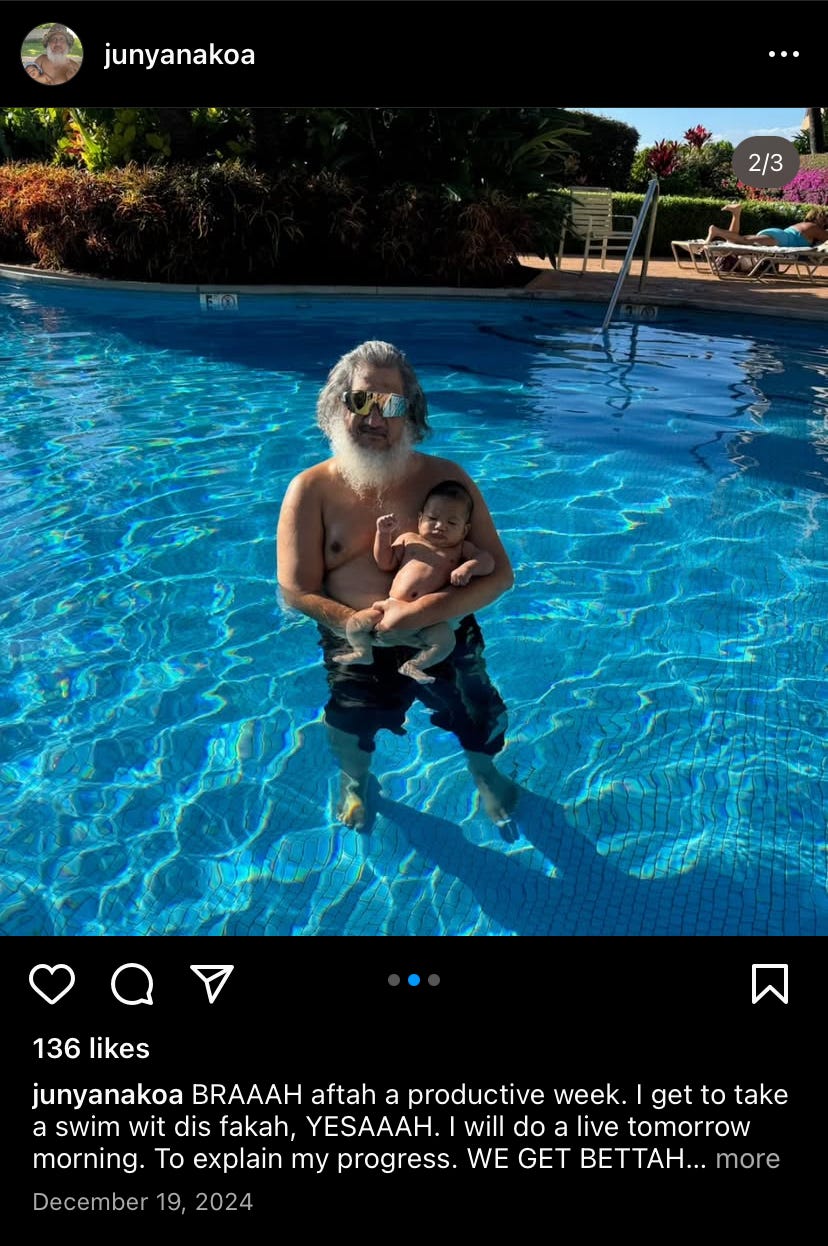So Many Pools, So Little Truth: Inside Maui’s Water Crisis Theater
During the June 9, 2025 Housing and Land Use meeting on Bill 9, one topic of discussion was the UHERO Economic Analysis of Proposal to Phase Out Transient Vacation Rentals in Maui County Apartment Districts. The County’s relationship and history with economic studies relating to the impact of Bill 9 has been complicated to say the least, so first a bit of history on that.
One of the first studies to surface was Paul Brewbaker’s 2022 Economic impacts of removing units in apartment-zoned areas of Maui County from short-term rental use. The study was prepared at the request of the Realtor’s Association of Maui in response to Councilmember Tamara Paltin’s failed run at the Minatoya List in 2021 with PSLU-34. Kloninger & Sims conducted an additional study in 2024 titled State of Hawai‘i and Maui Economic and Fiscal Impacts of the Short-Term Rental Industry.
Both the Brewbaker and the Kloninger & Sims analysis showed significant economic harm associated with taking short-term rental rights from Minatoya List condos. Significant economic harm, however, was inconvenient for Mayor Bissen, so he specifically requested that UHERO conduct a study in an attempt to forum shop for something that aligned with the target he was painting around the arrow he shot at the wall.
Mayor Bissen touted that “University of Hawaii Economic Research Organization (UHERO) will conduct an economic impact study of the bill that will provide an objective and educated forecast and analysis of this bill.” See https://www.mauicounty.gov/CivicAlerts.aspx?AID=13555
The county council separately pursued yet another economic impact study by issuing a request for proposal in August of 2024. After nearly six months of claiming that the study was underway, news broke that the county council had quietly abandoned its efforts to obtain the study due to disagreements with the vendor. Council’s $300,000 vacation rental phase-out study strays off course
UHERO released its “objective and educated forecast and analysis of [Bill 9]” in late March of this year. Like any reputable tyrant incapable of course-correcting or accepting inconvenient facts, Mayor Bissen immediately lashed out claiming the “objective and educated” UHERO study that he commissioned was flawed. See Mayor Bissen responds to UHERO analysis of vacation rental phase-out economic impacts.
After 18 months of cherry-picking facts from UHERO reports that aligned with its positions, Lahaina Strong similarly attacked UHERO claiming that UHERO was run by only white men, and therefore incapable of conducting a fair economic analysis because white people are inherently racist.
After finding “flaws” with all three existing economic studies, Bissen scraped the bottom to find an “expert” to support his preordained position that Bill 9 would not cause any significant impact. Enter, Haiku property baron, Matt Jachowski. While Jachowski is critical of those who own more than one property, his wife’s trust owns about 15 acres of land spread across 5 parcels that are appraised at nearly $6 million.
You may recall Jachowski as the computer programmer with no relevant education, skills, or experience relating to emergency management, housing, water, or economics that Mayor Bissen presented as an “expert” in these areas last summer at the planning commission hearing. Jachowski returns again, continuing his pattern of regurgitating baseless Lahaina Strong propaganda as “expert” opinions on items well outside his expertise.
As a former judge, one would think that Mayor Bissen would know that Jachowski would never qualify as an expert in any courtroom to provide any of the opinions presented on June 9. Perhaps Mayor Bissen missed that day in evidence class, or, worse, he intentionally put forth an unqualified individual to provide “expert” opinions with the intent that the county council would rely on those opinions during deliberations. Either way, Mayor Bissen’s presentation was a disservice to the county council that now must deal with the noise created by the mayor’s sophomoric political stunt.
In his presentation to council, Jachowski made the bald assertion that STR properties use 60-120% more water than residential uses. The only cited support for this opinion was Jachowski’s comparison of empty non-owner occupied second homes in one phase of the Wailea Palms property to another phase that allows short-term rental.
Jachowski’s own presentation plainly undermined his argument by stating that the non-STR phase is 73% non-owner occupied properties. Jachowski’s comparison of STR properties to largely empty vacation homes was intentionally misleading because non-owner occupied properties are not occupied full-time like owner-occupied or long-term rental properties. If there was a full-time occupant in these units, they would have been classified as "owner occupied" or "long-term rental", ergo, "non-owner occupied" is roughly synonymous with "vacant" most of the time.
Even self-proclaimed water god, Paele Kiakona, admits that normal residential water use is about 300-600 gallons per day which he describes as “low use.”
Kiakona has since deleted the video above from his Instagram account. Kiakona then testified, again without evidence, that short-term rental properties use 200-400% more water than nearby owner-occupied properties:
Kiakona’s 200-400% claim appears to similarly be based on the erroneous comparison of the primarily non-owner occupied portion of Wailea Palms to the short-term rental portion of Wailea Palms. Kiakona intentionally misrepresented facts in his testimony in an attempt to make a dramatic claim about short-term rental water use. 2020 Maui County records1 provide additional examples debunking Kiakona’s and Jachowski’s arguments.
Maui County FY20 DWS Customers
The real point that Jachowski and Kiakona refused to make was that the large hotels are the real water hogs.
Maui County FY20 DWS Customers
Big hotels abuse the water supply, making Lahaina Strong’s wish that short-term rental patrons simply shift to hotels that use exponentially more water per unit, not only absurd but reckless for the island’s water supply.
Despite suggestions that water use is somehow on an upward trajectory, water use has actually remained largely constant for the last 5 years in Maui County:
The similarities between the Mayor’s presentation, Jachowski’s presentation, and Kiakona’s testimony demonstrates an unusual and potentially inappropriate collaboration between elected official, lobbyist, and whatever Jachowski is at this point. So, all three drank from the same tainted water fountain, utilized the same flawed analysis, made the same inappropriate comparison of non-owner occupied properties to vacation rental properties, and not suprisingly reached the same unfounded conclusions relating to short-term rental water use.
Despite the fact that Kiakona’s argument is completely undermined, we will continue this discussion because the flaws in his secondary argument are also obvious. Notably, Kiakona claims that conversion of Minatoya condos to long-term housing will save so much water that the County can justify building more houses with that extra water. The problem is that Kiakona also claims that conversion of Minatoya condos to long-term would not result in a meaningful reduction in visitors, because those visitors will simply shift to the water-hungry hotels or “legal STRs.” Setting aside Kiakona’s willfully ignorant reference to “legal STRs,” his argument does not make sense.
If hotels in fact "pick up the slack" from the elimination of Minatoya STRs, and subsequently see a significant uptick in their own occupancy, then Bill 9 has simply moved visitors from a low water consuming property to one of significantly higher consumption. Similarly, how can Kiakona claim that shifting visitors from one STR property to another will somehow save water?
Overall, if a goal of Bill 9 is to shift visitors from STRs to hotels, the revenue projections for the Board of Water Supply indeed look bright, but this author cannot say the same for the island’s water supply.
As referenced above, the hedge fund-owned Grand Wailea is the single largest water user in Maui County at 172,340,000 gallons per year, and 559 gallons per unit, per day making the Grand Wailea the biggest revenue generator for the Maui County Department of Water Supply which of course tracks the revenue per customer. This author is not sure what was happening at the Hotel Wailea, but the daily water use in 2020 averaged out to 2,527 gallons per unit, making the Hotel Wailea the least efficient water user on a per unit, per day basis in 2020. Therefore, the concept that shifting visitors from short-term rentals to water-guzzling hotels will somehow save water is completely unfounded.
Additionally, Kiakona’s assertion that local residents are such amazing stewards of the precious water supply is not uniformly accurate. Here, Lahaina Strong member, Shannon I'i “conserves” water with her daily car washes:
Given the claimed water crisis and Lahaina Strong’s feigned care for the environment, one must ask why the Kahana Canoe Club squandered so much precious water conducting a car wash fundraiser which ultimately discharged soapy waste water just feet from the ocean.
A 2020 study found that “the carwash industry undermines water security and threatens ecosystem health,” raising questions regarding Lahaina Strong supporter’s love for car washing. See Clean vehicles, polluted waters: empirical estimates of water consumption and pollution loads of the carwash industry.
Tiare Lawrence enjoyed her new Costco splash pad sitting atop her irrigated lawn this summer.
While not using excessive water to grow thirsty cocktail crops such as limes and watermelons, Lawrence enjoys some pool time with Kai Nishiki.
Despite a severe water crisis in Thailand where local residents at times do not have any access to water, Nishiki indulged in every pool she could find, commenting “so many pools so little time,” demonstrating little care for water conservation when her own pleasure is at stake.
We also have not forgotten about Lahaina Strong lead organizer, Courtney Lazo, who continues to push out her water-intensive, fast-fashion garments despite recent findings that the “fast fashion system continues to accelerate overproduction and overconsumption.”
Here is Uncle Leonard enjoying a swim in one of these pilau pools.
Like Mr. 5 for $5,877,200 Jachowski and his critical opinions on owning more than one property, many Lahaina Strong supporters do not practice what they preach and somehow believe water conservation is a task for everyone else.
Member Paltin recently introduced legislation to place a moratorium on swimming pools. Paltin’s proposal went before the Board of Water Supply for comment. Lahaina Strong submitted written testimony supporting Paltin’s proposal. On June 19, 2025, Ms. Austin testified “We are in a dire water situation right now…” While criticizing using water for swimming pools, Austin claimed that she “hasn't been able to find swimming pools in the public trust doctrine.” This author is curious whether Ms. Austin was able to find any references to car washing in the public trust doctrine.
The June 19, 2025 Board of Water Supply minutes reflect that Kiakona rightfully recused himself from consideration of the proposed swimming pool moratorium, stating:
Member Kiakona stated that he wanted to be transparent on the agenda item relating to swimming pools, Resolution 25-115. From the time that the resolution was introduced, he held a pretty firm stance, one that does align with Lahaina Strong, and because he is employed by Lahaina Strong and Lahaina Strong has submitted testimony in support of the resolution, he will be recusing himself from the deliberations and voting to avoid any potential conflicts of interests and to maintain the integrity of this work.
Members Rawlins-Fernandez and Paltin have unfortunately not demonstrated the same level of integrity by stepping aside from the Bill 9 vote, despite similar fact patterns where their own outside interests cannot be separated from their councilmember duties to the community. KRF actively serves on the Board of Directors of HAPA, an organization that has vehemently lobbied for passage of Bill 9. To read more about the KRF conflicts of interest, check out Yet Another Conflicted Maui County Official: When Will Ethics Violations be Taken Seriously? To read more about Paltin’s conflicts of interest, check out Opposing Approval of Lahaina Strong/Our Hawaii Lobbyist Registrations and Raising Concerns Regarding Councilmember Conflicts of Interest.
Overall, the Mayor and Lahaina Strong have demonstrated an inability to listen to actual experts, consider real data, or apply critical thinking skills. Many of these individuals demand strict conservation of water by others, while exploiting water resources for their own agendas and hedonism. This type of cult-like behavior creates dangerous and tyrannical dynamic that should scare local Maui residents. Maui needs for the era of Lahaina Strong false prophets and authoritarian elected officials, such as Mayor Bissen, to end in place of real leadership. Bill 9 will help us understand whether Maui County has any elected officials who are capable of showing true leadership by putting this bad legislation to pasture and focusing on real solutions instead of capitulating to the obnoxious and uninformed tantrums of Lahaina Strong.
Hawaii imposed a 14 day quarantine for visitors on March 26, 2020. The 2020 fiscal year for Maui County ended on June 30, 2020. Thus, the final months of the 2020 fiscal year data from Maui County are not likely representative of a “typical” water use year for some properties. Even using 125% of the Maui County 2020 fiscal year figures, which likely overestimates the water use, still leaves these STR properties on the low end of Kiakona’s “low use” range.


